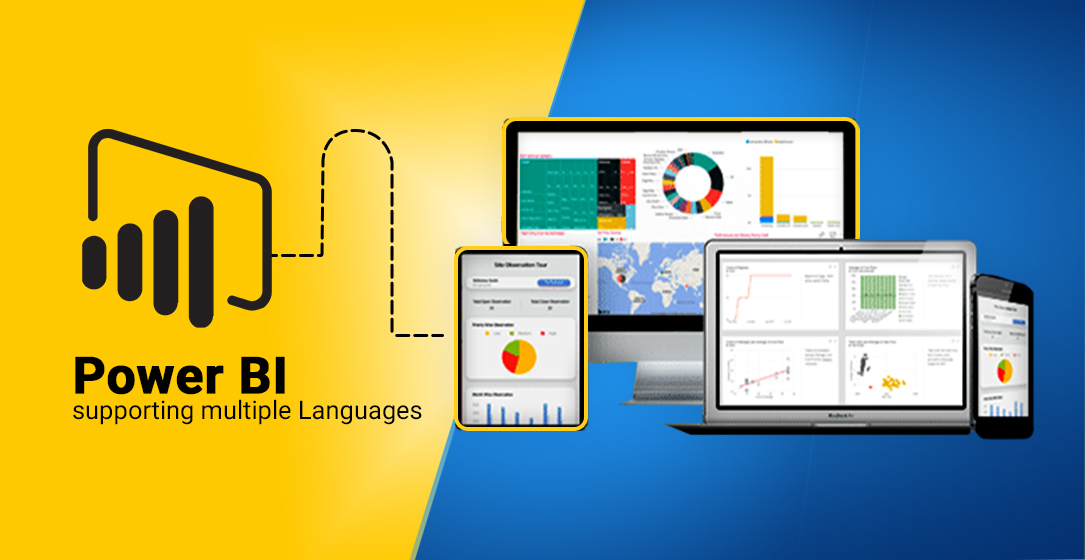May 25, 2023 | SNAK Consultancy
Share on :
How Power BI supporting multiple Languages?

Power BI is a versatile business intelligence tool that has become an essential tool for many organizations. It enables users to analyze, visualize, and share data insights, making it easier to make data-driven decisions. One of the key features of Power BI is its ability to support multiple languages. This means that users can create reports and dashboards in different languages to meet the needs of their global audience
Power BI's support for multiple languages is achieved through the use of localized user interfaces and language-specific data. Users can create reports and dashboards in any language they prefer, including right-to-left languages such as Arabic and Hebrew. This feature is especially useful for multinational organizations that need to create reports and dashboards in different languages to cater to their customers' needs.
Here's how Power BI supports multiple languages
1. User Interface Localization
Power BI's user interface can be localized to support different languages. When a user selects a language, the user interface is translated to that language. The user interface includes menus, dialog boxes, and tooltips, making it easier for users to navigate the tool in their preferred language. Power BI supports over 40 languages, including Chinese, French, German, Japanese, Portuguese, and Spanish.
2. Language-Specific Data
Power BI allows users to import language-specific data, such as numbers, dates, and currencies. This means that users can create reports and dashboards that use localized formats, making it easier for users to understand the data. For example, in the United States, the date format is MM/DD/YYYY, while in Europe, it is DD/MM/YYYY. Power BI allows users to select their preferred date format when creating reports and dashboards.
3. Right-to-Left Languages
Power BI also supports right-to-left languages, such as Arabic and Hebrew. When a user selects a right-to-left language, the user interface and data are automatically aligned to support that language. This includes support for right-to-left reading order, text direction, and punctuation.
4. Translations
Power BI also allows users to translate reports and dashboards into different languages. This is especially useful for multinational organizations that need to create reports and dashboards in multiple languages. Users can export a report or dashboard, translate it, and then import it back into Power BI. The translated report or dashboard can then be shared with users who speak that language.
5. Custom Visuals Localization
Power BI also allows custom visuals to be localized. Custom visuals are extensions that are created by third-party developers and are used to enhance Power BI's functionality. Developers can create custom visuals that support multiple languages by providing translations for the user interface and data.
The benefits of Power BI's support for multiple languages are numerous. It enables multinational organizations to create reports and dashboards that cater to their global audience, improving communication and collaboration between different teams. It also makes it easier for users to understand the data by presenting it in their preferred language and format. Additionally, it improves the user experience by providing a localized user interface that is more familiar to users.
Questionnaire
Ques.1) What programming language does Power BI support?
Ans. Microsoft Power BI supports two different languages, M language and DAX (Data Analysis Expression) that can be used to filter, manage, and visualize data.
Ques.2) What is the difference between DAX and SQL?
Ans. In DAX string comparison requires you more attention than in SQL, for several reasons: DAX doesn't offer the same set of features you have in SQL, a few text comparison functions in DAX are only case-sensitive.
Ques.3) What are the two languages supported by Power BI?
Ans. Power BI supports a wide variety of languages for its user interface, including English, Spanish, French, German, Italian, Japanese, Korean, Portuguese, Russian, and Chinese (Simplified and Traditional). However, when it comes to data modeling and calculations in Power BI, it primarily relies on two programming languages:
- 1. DAX (Data Analysis Expressions): a formula language used to create custom calculations, measures, and columns in Power BI. DAX is similar to Excel formulas and allows users to aggregate and analyze data in complex ways.
- 2. M: a functional programming language used to transform and manipulate data in Power BI. M is used to create queries, extract and transform data from different sources, and create custom data transformation steps..